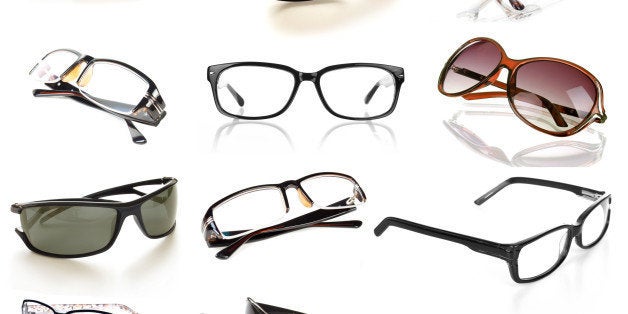
Pinpointing the causes of increased vision loss in children and youth is not facile. Some explanations for increased vision loss point to the digital age as the culprit. We can all count the extended hours of work and leisure time spent in front of all manner of digital screens be they computers, tablets, smartphones or television.
Describing the influence of technology on parenting, a Shanghai mother shared her own theory on the increasing rate of myopia in China:
Sometimes when parents don't have time to play with their children, they would throw a cellphone or an iPad to their kids to let them play... Kids would become totally absorbed in the games. I think this is very damaging to their eyes.
This is a trend not limited to China.
While the digital age has influenced and accelerated our focus on all things digital, let's not forget that before its time -- it was poor lighting, reading too many books or sitting too closely to the television screen that would "ruin your eyes."
The bottom line is that we expose our eyes to conditions and prolonged focus that contribute to persistent eye strain and potential vision loss over the long term.
The greatest strides in healthy vision have been made through education and exerted care campaigns in the last 20 years. VISION 2020, a global initiative for the elimination of preventable blindness, is a joint program of the World Health Organization (WHO) and the International Agency for the Prevention of Blindness (IAPB) with collaboration from public, private and non-profit sectors.
While World Sight Day is celebrated in October, the real work of avoiding preventable blindness happens year-round. To call World Sight Day a celebration contradicts the pervasiveness of vision loss.
Some 90 percent of the world's visually impaired live in low-income settings. But a recent study on one of the largest population investigations to be conducted on nearsightedness of 20,000 children in China found that wealthier peers were more likely to be nearsighted.
A related finding concluded that, "Living in the middle-class area was associated with a 69 percent increased risk for nearsightedness, even after adjusting for other risk factors, such as time spent reading, outdoor activity and whether the student's parents wore glasses."
The reasons for the differences in middle class and richer communities and low-income areas are not well known, as the China study suggests.
But this calls for more research on "myopia risk and classroom use of near [i.e., books, digital materials] and distance [i.e., blackboards] teaching tools." Ultimately, increased understanding explaining the rise in myopia could result in improved prevention strategies including screening and correction.
My own experience can be characterized as that of life before the diagnosis of nearsightedness and life after corrected vision.
During a yearly vision screening with the school nurse, I did not recognize all the items on the eye chart. I was eight years of age and more worried that I had failed the test.
Many questions surfaced about the how and why of the diagnosis. In the end it was evident that I had compensated for what was my normal, putting my nose to print, developing a variety of skills to piece together what I could not see. While the idiosyncrasies I developed served me well, they also belied the fact that my vision needed correction.
The day my parents brought me home wearing that first pair of glasses, I was struck by the detail that surrounded me. Having until then lived in a world of blurs and shadows, the revelation brought by my newly acquired vision was an epiphany. Never before had I seen the vivid colors, the contours and shapes with defined edges. There was such crispness to the lens. I saw faces as never before.
There was a clear demarcation between a past lived without the clarity of vision and the moment I first saw through my own looking glass. The breach in vision had ruled too many aspects of my life and had also been a cause of numerous falls and bumps.
The World Health Organization estimates indicate that globally 19 million children are visually impaired and that 12 million of those children have conditions, like my own, that could be easily diagnosed and corrected through a pair of lenses.
On a global scope, VISION 2020 is based on a foundation of community participation to promote equity and quality of services in visual outcomes and access. Because vision loss can go unnoticed and the causes of vision loss continue under study, let's promote awareness and screening in our own communities. It could be the difference between night and day.
--
Rosi Andrade, PhD is an associate researcher professor at The University of Arizona's Southwest Institute for Research on Women and a Tucson public voices fellow with The OpEd Project. Her research in "Frontiers: A Journal of Women Studies," has been included in the Kennedy Institute of Ethics collection at Georgetown University.